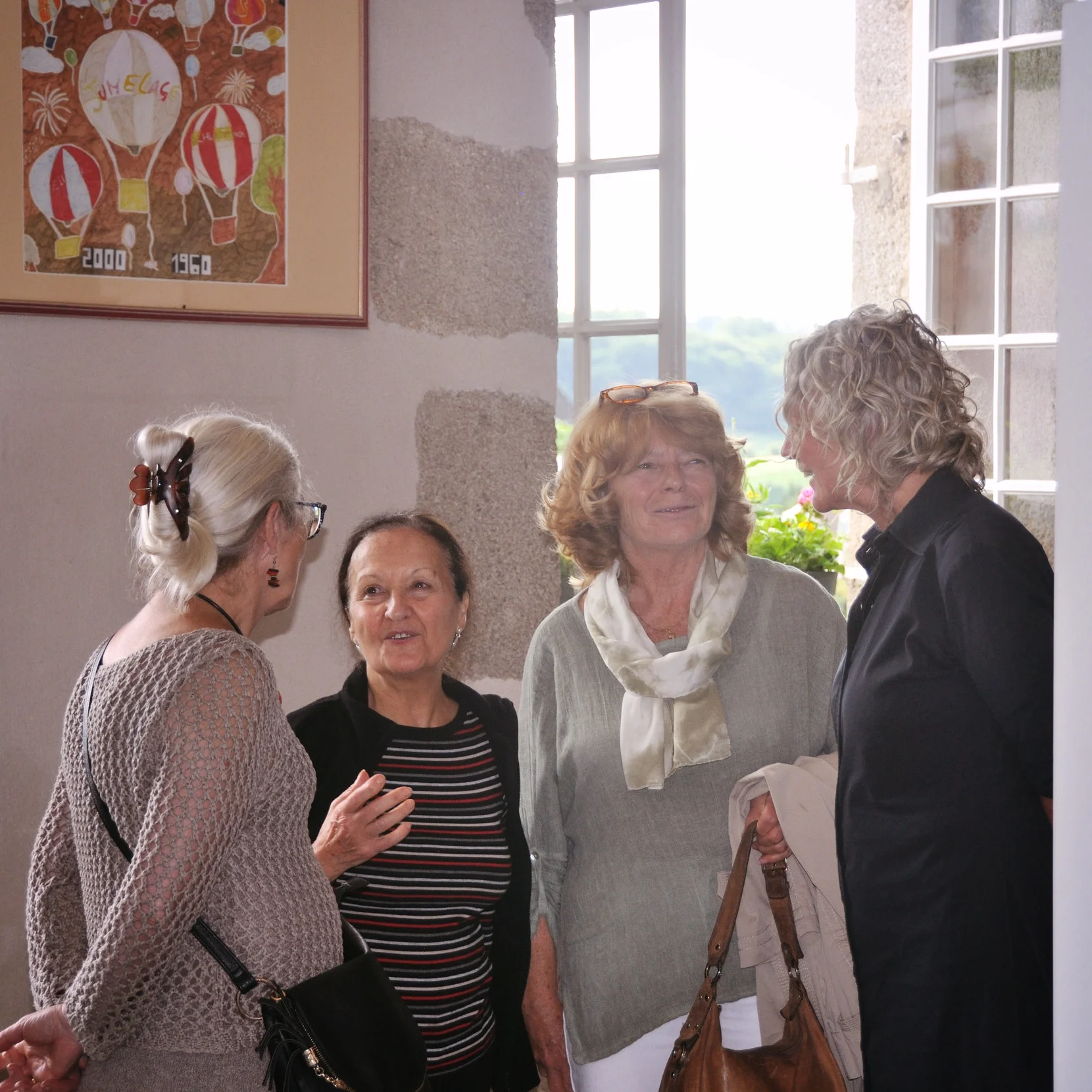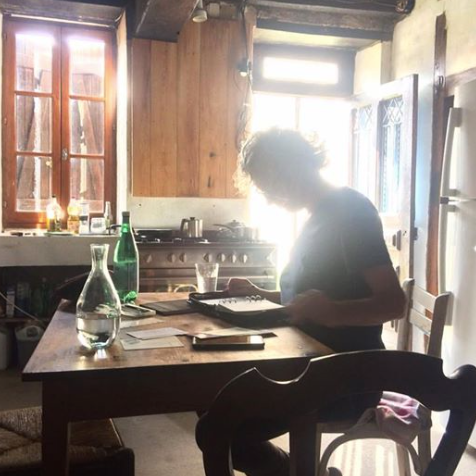The upcoming fall season brings much good news. Listed below are 3 items I am especially grateful for and excited to share with you:
I am honored and humbled that AIR Serenbe has chosen me for their artist residency for the month of November. What an honor! I will spend an entire month in the wooded community of Serenbe located southwest of Atlanta, Georgia, USA. I will be in my own cottage, with no assigned tasks except to explore, discover, experiment and create art! This accomplishment would not be possible without your continued encouragement of my work and me. (Thank you!)
2) I'm also thrilled to report that the Paris exhibit is finally going to happen after many delays due to the pandemic. I will be hanging the tropical flowers themed exhibit at La Caféothèque de Paris next week. In the heart of Paris, La Caféothèque is situated in the 4th arrondissement, right on the Seine River with a view of Notre Dame Cathedral. The exhibit opens on Friday August 28th. The reception (vernissage) will be held in October and I will be sure to let you know the date so that you can plan ahead to attend (!). I am extremely excited to be part of this two-person exhibit, held in the heart of Paris, which includes the French artist Anne Buxerolle.
Begonia 'Raddi', 2020, by René Shoemaker, at La Caféothèque de Paris.
Lévitation 009, by Anne Buxerolle, at La Caféothèque de Paris..
3) Les toits d'Aubusson is included in an exhibit that opened this week at ATHICA, the Athens Institute for Contemporary Art. SPACE: 2020 Juried Exhibition "references SPACE which is found all around us . . . as a concept and a construct with many different connotations." I am proud to have been chosen in this competitive exhibition, which will be on view through September 27.
Les toits d'Aubusson, included in the SPACE exhibit, sold to a collector in Chicago this week
Finally, as you know, for a number of years I've been working hard to bring the best art possible into the world to share with you while seeking to reach a wider, global audience. In the service of this goal, I am raising my prices on original art effective October 1st. As my subscribers, collectors, and loyal supporters I wanted to offer you this window of time to buy original art at the original price. (Fine art prints will remain at their current price.)
In 2001 when I first exhibited at the Clayton Street Gallery in Athens, Georgia, a silk painting sold, unframed, for $100. Today, the cost of materials, upkeep for the studio and working every day to bring my best art into the world is not sustainable at my current prices. Adjusting the prices to more accurately account for the value of time, labor, and skill I invest and the quality of the materials I use will insure that I can pay my monthly bills, allow my business to thrive, and enable me to continue to create art over the long term.
I appreciate your understanding, and as always, I am abundantly grateful for all the ways in which you continue to inspire and support me.
Église de Notre-Dame de Montluçon, France
La Creuse, France
Upcoming:
August 28 - October 15, 2020
De l'écorce à la fleur:
Les temps de la forêt
La Caféothèque de Paris
52, rue de l'Hotel de Ville
Paris, 75004, France
Now On Exhibit:
August 15 - September 27, 2020
SPACE: 2020 Juried exhibition
ATHICA: Athens Institute for Contemporary Arts
675 Pulaski St, Suite 1200
Athens, GA 30601, USA




































